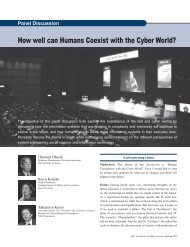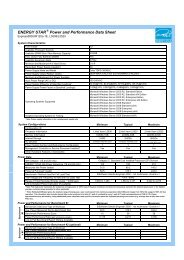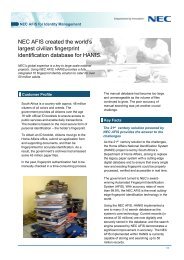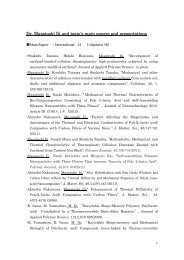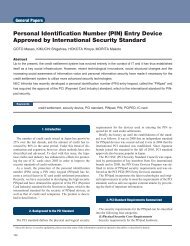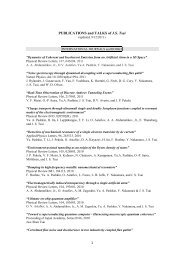ExpressCluster X 3.1 for Linux Getting Started Guide - Nec
ExpressCluster X 3.1 for Linux Getting Started Guide - Nec
ExpressCluster X 3.1 for Linux Getting Started Guide - Nec
Create successful ePaper yourself
Turn your PDF publications into a flip-book with our unique Google optimized e-Paper software.
Chapter 5 Notes and RestrictionsInstalling operating systemNotes on parameters to be determined when installing an operating system, allocating resources,and naming rules are described in this section./opt/nec/clusterpro file systemIt is recommended to use a file system that has journaling functions to improve tolerance <strong>for</strong>system failure.Mirror disksDisk partitionExample: When adding one SCSI disk to each of both servers and making a pair of mirroreddisks:Server1Cluster partition/dev/sdb1Data partition/dev/sdb2Mirror partition deviceA failover unit ofmirror disk resourceServer2/dev/sdb1/dev/sdb2/dev/sdb/dev/sdbExample: When using free space of IDE disks of both servers, where the OS is stored, andmaking a pair of mirrored disks:OS root partition/dev/hda1Server1/dev/hdaOS swap partition/dev/hda2Cluster partition/dev/hda3Data partition/dev/hda4Mirror partition deviceA failover unit ofmirror disk resourceServer2/dev/hda1/dev/hda2/dev/hda3/dev/hda4/dev/hda• Mirror partition device refers to cluster partition and data partition.• Allocate cluster partition and data partition on each server as a pair.• It is possible to allocate a mirror partition (cluster partition and data partition) on the diskwhere the operating system resides (such as root partition and swap partition.).- When maintainability and per<strong>for</strong>mance are important:It is recommended to have a mirror disk that is not used by the operating system(such as root partition and swap partition.)- When LUN cannot be added due to hardware RAID specification: orWhen changing LUN configuration is difficult in hardware RAID pre-install model:118<strong>ExpressCluster</strong> X <strong>3.1</strong> <strong>for</strong> <strong>Linux</strong> <strong>Getting</strong> <strong>Started</strong> <strong>Guide</strong>





